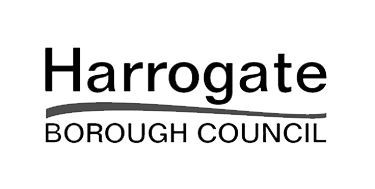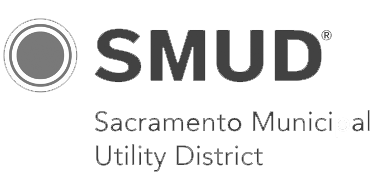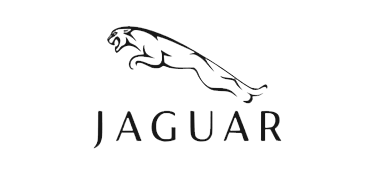SMART PARKING SOLUTIONS
FAQ
Nwave is a smart parking technology company that developed a revolutionary wireless parking management system to help parking asset operators streamline their processes.
The sensors consume very little power and boast extremely robust mechanical design. It may take up to 10 years before batteries will need replacement.
The entire system is managed through Nwave’s cloud app, whose upkeep is our responsibility and is free for our customers.
The cloud back-end application is maintained by Nwave, and there is no need for a specialist on the client’s side to perform any kind of maintenance work.
Nwave does not hold or process credit card details nor we access personal customer data. We manage parking sessions start and end time via tokenized user data leaving the financial and personal data processing to mobile payment application. Having said that our data network uses AES 256 VPN encryption and TLS/HTTPS connection.
Yes, we back up all parking data of our customers via managed backup service of leading private cloud infrastructure provider.
As our network deals with electronic payments and other user data, data security is of paramount importance. Thus, we developed a system which is fully compliant with NSA regulations, uses advanced data encryption and secured server connection. You can find out more about Nwave’s network security on our Software page.
Real-time parking availability data motivates customers to use mobile applications over cash and coins payments. On top of that Nwave’s secure driver identification technology brings cutting edge one click parking experience – customers don’t need to search and enter parking area codes, the session does start with one tap and ends automatically when the vehicle drives away.
The integration is implemented through ready-to-use open source software modules from Nwave’s SDK and RESTful cloud APIs. It comes at no extra cost.
Nwave’s vehicle detection system has been integrated with such popular solutions as Parkopedia, ParkHub, AppyParking, Japa, Rover.
Nwave does not have an app, and the reason for it is quite simple – there are dozens of good parking apps that have millions of users. Nwave is a global technology provider while many apps have region-specific features and local requirements. Some users might be frustrated by the fact that they need to download and install yet another app, in addition to several way-finding and parking apps they already have.
Seeing parking payments applications as valuable partners, Nwave has developed software integration modules that allow its cutting edge technology to run with any popular mobile frameworks.
Probably the biggest concern when developing a smart parking solution is its accuracy. We take pride in having developed a sensor that provides vehicle detection data with 99% accuracy. At the same time, no magnetometers and ultrasound sensors alone can provide it, simply because the way they detect a parking event is prone to error, and thus there is more chance they can confuse some other objects or movements with parking events or do not detect some vehicles. At Nwave we have created a low power sensor fusion coupled with advanced statistical algorithms: while each individual sensor alone may not be 99% accurate, working together they deliver superior accuracy.
Our company manufactures vehicle detection sensors of two types – surface-mount and flush-mount. You’ll find a description of each and a datasheet of their characteristics on our Product page.
The return on investment depends on quite a few factors: daily turnover, the cost per hour of parking, enforcement regulations in place and approach to monetizing better user experience
Some of our clients have reported that the vehicle detection system brought ROI in as fast as three months.
Our solution has passed the piloting stage, we have multiple clients with thousands of sensors installed. References can be provided upon request. At the moment our minimum order quantity is 100 sensors.
Our solution basically has no limitations regarding the number of parking spots it can support. In fact, some of our clients are large cities, with as many as 7,000spots equipped with the sensors.
Upon the implementation of the solution, we provide our clients with training and detailed documentation on using the system. The training process doesn’t take long, the back-end and mobile app have simple and intuitive UX design. Training comes at no extra cost.
Our software suite includes a cloud analytics application for managing your vehicle detection system. The software is maintained and regularly updated by us with no need for extra spendings on the client side. Surely, our customers always have the option to discard our software in favor of their own solution. In this case, we’ll gladly assist you in integrating through our APIs. We will however strongly recommend carefully consider pros and cons. of in-house parking management system development: unless your project is about tens of thousands of sensors, then there is no economic rationale even to consider developing and maintaining a quality SaaS product.
Our solution is setting a world record in terms of short installations times: starting from quick affixing to the asphalt and further accelerated with dedicated mapping and calibration mobile app that takes a few seconds to initiate the sensor and load its coordinates in the cloud backend system.
Specific timelines depend on a particular project, but to give you a general idea of how long exactly the implementation may take, let’s take a municipality in the UK for example:
Suppose it requires 5,000 sensors and plans to use a popular payments-enabled mobile app for way-finding, as well as Nwave’s cloud back-end services. One installation crew consisting of 3 people can install 500 sensors per 8 hours working day. So the deployment of such a system would take up to 10 working days for 1 crew or one working week for two crews.
Here are the advantages of Nwave’s sensors:
- low power consumption – 10 years of battery life with 20 parking sessions day;
- 99% detection accuracy;
- quick installation (30 seconds per sensor);
- wide-range network (up to 5 km);
- thin mechanical design – just 20mm, compliant with road safety regulations.
On our Technology page, you can find a comparison of the sensor with other popular solutions.
Our vehicle detection system is used by municipalities, enterprises and universities’ on-campus parking operators. The use of parking spaces at these organizations facilities can be free or paid, they can use either mobile apps or digital signage for way-finding, and manage the network through our dedicated cloud back-end app or a solution of their choice. So, there are basically no limitations on the type of companies and parking assets, except for the minimum order, which is typically not less than 100 sensors per site.
Some naysayers might suggest that a big disadvantage of a smart parking system is its cost. However, some modern solutions boast affordability while being accurate and easy to manage, as well as having a decade long battery life. Any investment spending has to be evaluated from the ROI perspective. Nwave’s customers report a very fast return on investment – some as quick as three months after the implementation.
The advantages of digitizing and disseminating real-time parking availability information are quite numerous, the most immediate benefits include:
- quick and easy way-finding;
- payments automation;
- overstay detection, unauthorized parking detection;
- data intelligence and parking rates optimization;
- reduced air pollution;
- etc.
You can find out more details on how a robust vehicle detection system can benefit your organization or municipality here.
A smart parking system is a technology that provides data on parking space occupancy in a particular area in real time and makes it available to drivers through selected media (typically mobile applications and digital signage) for a facilitated search of vacant parking spots.
The development of a particular smart parking system includes hardware design, development of firmware and dedicated cloud software for processing vehicle detection sensor data.


















